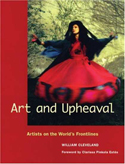Design / architecture
April 30, 2009 by admin
In The Place of the Arts in Multi-focus Foundations, Bruce Sievers writes that the rationale for supporting both the arts and the nonprofit sector as a whole is integrally linked to their capacity to advance pluralism, promote voluntary action, accommodate diversity, and champion individual visions of the public good. “Civil society,” Sievers notes, is increasingly the accepted concept to describe this sphere of social action.
Read More...April 30, 2009 by admin
As we, individually or collectively, set out to make a case for the many ways the arts have relevance in today's world of economic turmoil and change, it's helpful to be clear what we mean by terms like “art,” “culture,” and “industry” and also to understand what the same terms might mean to others. The words we use are telling. Their use has a history that says much about where the work we call “art” resides in our collective lives from one period to the next.
Read More...April 30, 2009 by admin
The following piece is excerpted from the second of a two-part article written for the Community Arts Network, “The New New Deal.” Part one, published in December 2008, was titled, “the New New Deal: Public Service Jobs for Artists.” It described some of the things artists could do with public-service jobs. This excerpt is from part two, published February 24, 2009, “A New WPA for Artists: How and Why.” In this excerpt, Goldbard takes up the question of “why,” what are all the good reasons to support a new WPA for artists.
Read More...April 30, 2009 by admin
2007, 114 pages. Urban Institute, 2100 M Street NW, Washington, D.C., 20037, 202-833-7200, www.urban.org
Read More...April 30, 2009 by admin
2007, 56 pages. Urban Institute, 2100 M Street NW, Washington, D.C., 20037, 202-833-7200, www.urban.org
Read More...April 30, 2009 by admin
2008, 24 pages. The Wallace Foundation, 5 Penn Plaza, 7th floor, New York, NY, 10001, 212-251-9700, www.wallacefoundation.org
Read More...April 30, 2009 by admin
2009, 40 pages. Published by the Alliance of Artists Communities, 255 South Main Street, Providence, Rhode Island, 02903, 401-351-4320, www.artistcommunities.org
http://www.artistcommunities.org/files/files/
MidwesternVoicesAndVisions.pdf
April 30, 2009 by admin

Art and Upheaval: Artists on the World's Frontlines, William Cleveland, 2008, 334 pages, New Village Press, Oakland CA
Read More...April 30, 2009 by admin
Teaching Artist Journal; Taylor & Francis Group, LLC; Nick Jaffe, editor.
Read More...April 30, 2009 by admin
Bill Ivey chaired the National Endowment for the Arts from 1998 through 2001, directed the Country Music Foundation from 1971 to 1998, and was twice elected chairman of the National Academy of Recording Arts and Sciences. He presently serves as founding director of the Curb Center for Art, Enterprise, and Public Policy at Vanderbilt University.
Read More...